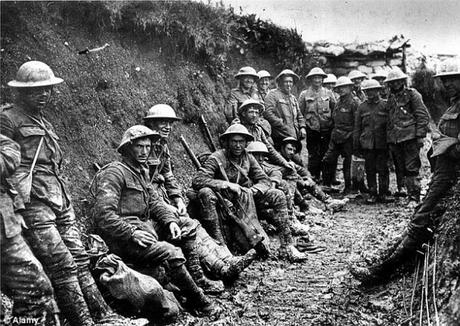
I had to temporarily abandon my reading of Armadale after it disintegrated in my bag – rest assured, it has been repaired with lots of sellotape and will be finished soon – and after seeing the first poppies starting to be sold in London, I decided to pick up Regeneration, the first in Pat Barker’s trilogy about the psychological impact of WWI, featuring the real life figures of writers Siegfried Sassoon, Robert Graves and Wilfred Owen, as well as Dr William Rivers, who treated shell shocked soldiers at Craiglockhart War Hospital in Edinburgh. I went through a huge phase of reading WWI literature a few years ago, and absolutely loved the experience, yet somehow I never got around to Regeneration, which was a real oversight. I couldn’t bear to put it down, and found myself thinking about it all day while I was at work. The characters, in particular Dr Rivers, are so vital that I almost felt as if they were alive, and the intensity of the psychological trauma suffered by both patients and doctor is brilliantly, heartrendingly drawn. The novel is a mixture of fact and fiction, but the lines blur seamlessly to create a realistic, powerful and incredibly moving exploration of the effect of war on the psyche.
The story opens with Siegfried Sassoon’s admission to the hospital in 1917, after writing his famous declaration against the war, in which he acknowledges his ‘wilful defiance of military authority’: an act tantamount to treason in the eyes of many. In order to save him from a court martial, therefore, his friend Robert Graves pulls strings to ensure that Sassoon’s sanity is called into question, and has him sent to the comfortable surroundings of Craiglockhart, where the pioneering Dr Rivers has been treating soldiers with a variety of symptoms of mental illness caused by their war experiences. Sassoon is obviously not mad; he is simply disillusioned and horrified by what he has seen. Dr Rivers knows this from the outset, and seeing the deep conflict and trauma beneath the surface of Sassoon’s aloof exterior, over a period of several weeks, the men develop a close bond as Sassoon is helped to reconcile his fervent pacifism with his sense of duty, and decide on his future path.
There are many other fascinating characters, such as Prior, a working class officer ashamed at the fact that he has broken down, and conflicted between his desire to stay alive and his desire to do his duty. There is also the tragic ‘fossilised schoolboy’ Burns, who can’t eat after a traumatic experience with the dead body of a German soldier. Many of the men struggle with feelings of shame and guilt and failure, taught as they were that real men do not feel fear, and duty must always come before self. To have found the war unbearable is to have become emasculated, feminine, weak; to no longer be a man. With sensitivity and intelligence, Pat Barker explores the ideological aspects of war and how closely attitudes towards it were (and perhaps still are) interlinked with societal expectations of accepted masculine behavior. Of particular interest to me was how many of the men at Craiglockhart were classified as being ‘mad’ when they were simply just sad. Their experiences had revealed the horror of inhumanity to them, and shown them the vulnerability and futility of human existence in a shatteringly visceral way. However, feeling a profound sense of hopelessness or melancholy was not an approved response to war; having any emotional response at all was simply not expected nor acknowledged. A man’s job is to do his duty; his feelings about it are utterly irrelevant. Gradually it is this barbaric approach that Rivers begins to see might be the true madness around him, and he struggles with the concept that he is ‘healing’ these patients only to send them back to the battlefield, where society says they belong. For, what is madness, the novel prompts us to consider – surely it is war that is insane? And perhaps the only sane response to such insanity must be to break down emotionally, otherwise what does that say about humanity, if we can look destruction in the face and not be moved by it? This is such a fantastic and thought provoking novel, and if you haven’t read it, i highly recommend it. I’m really looking forward to reading the sequels next.
